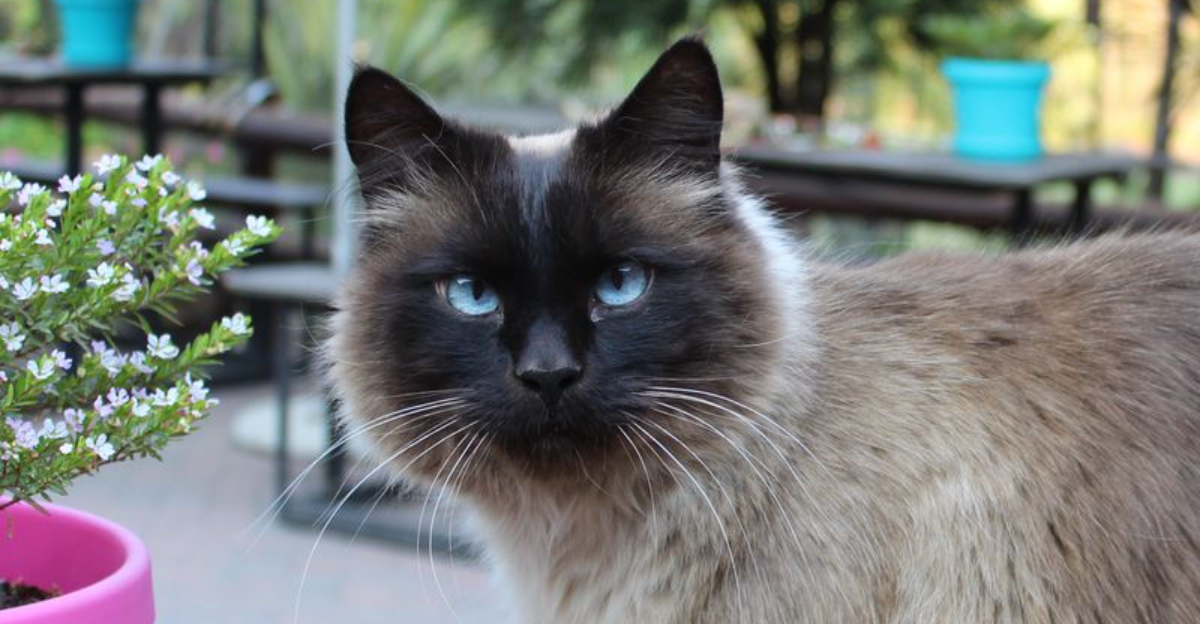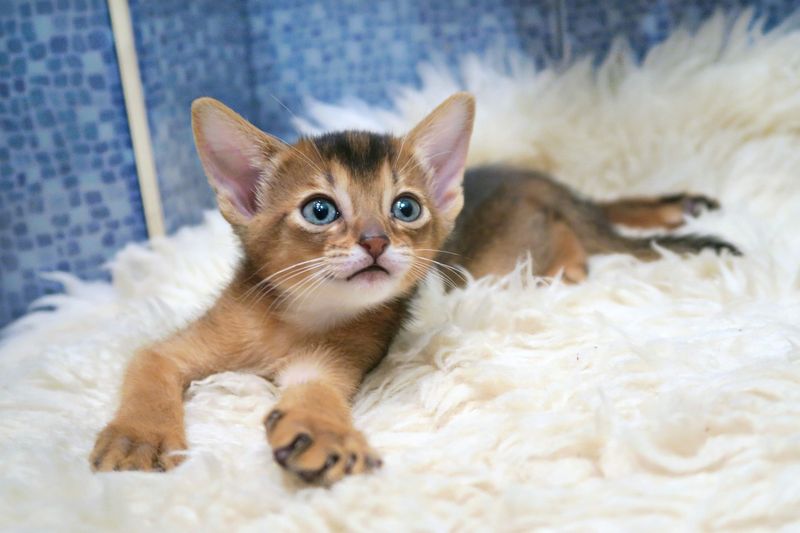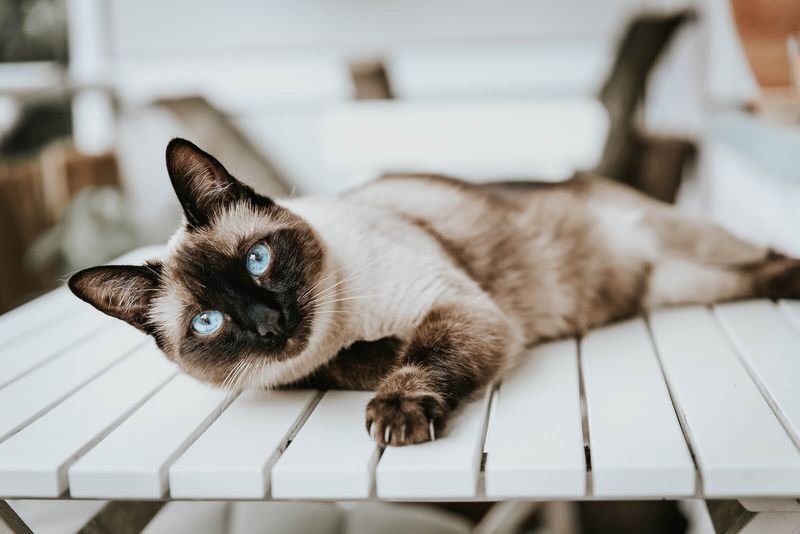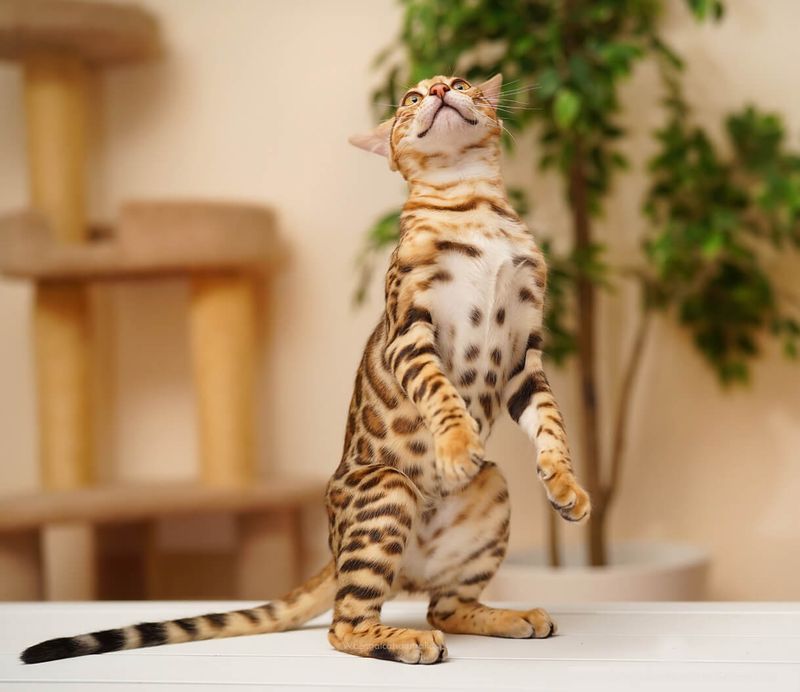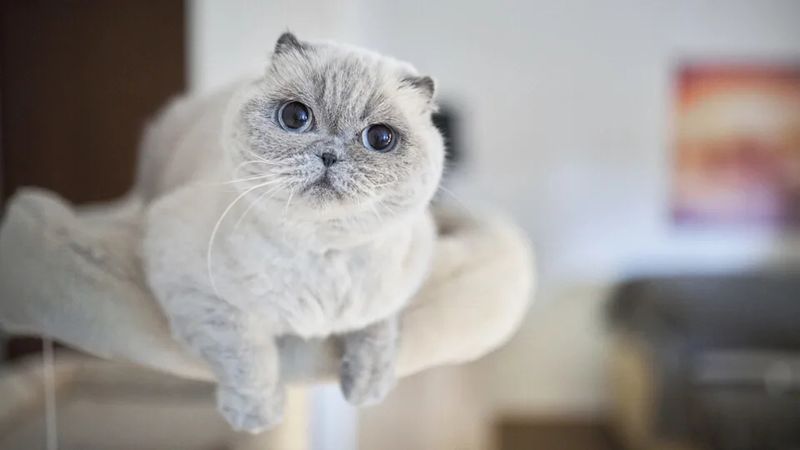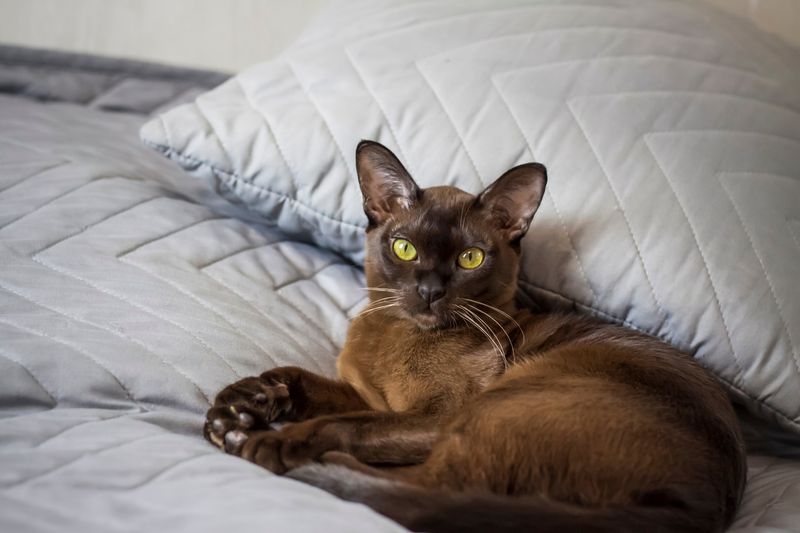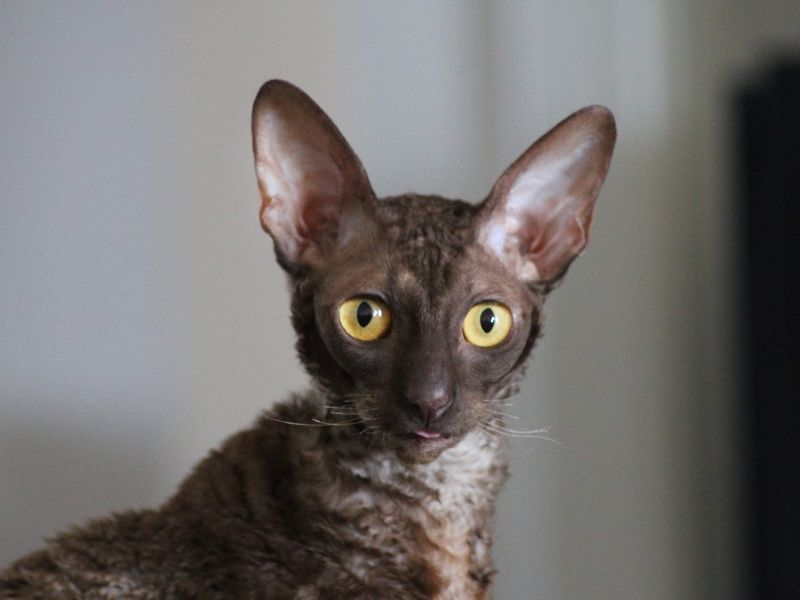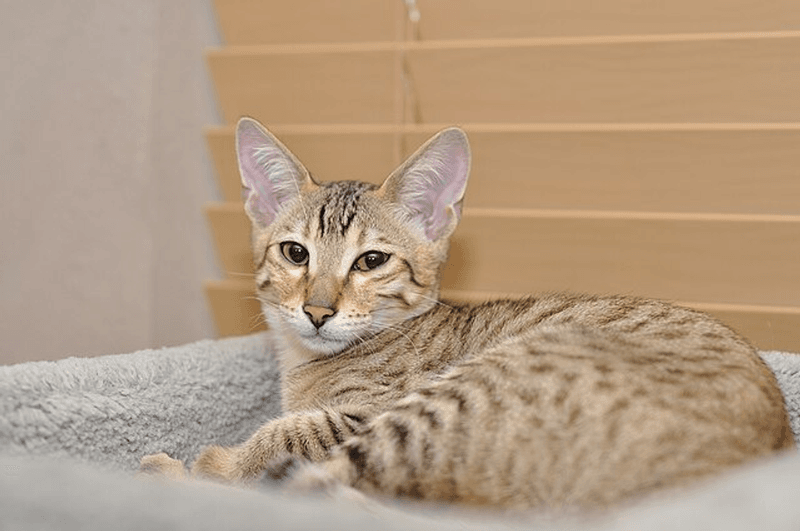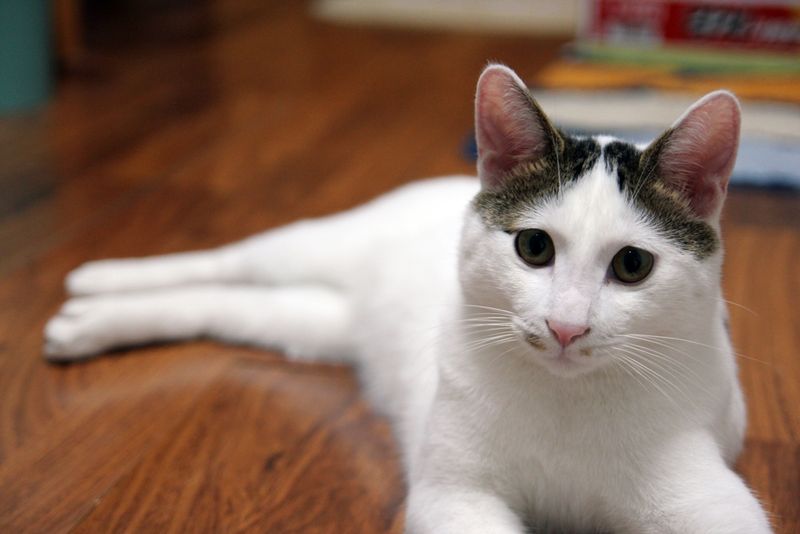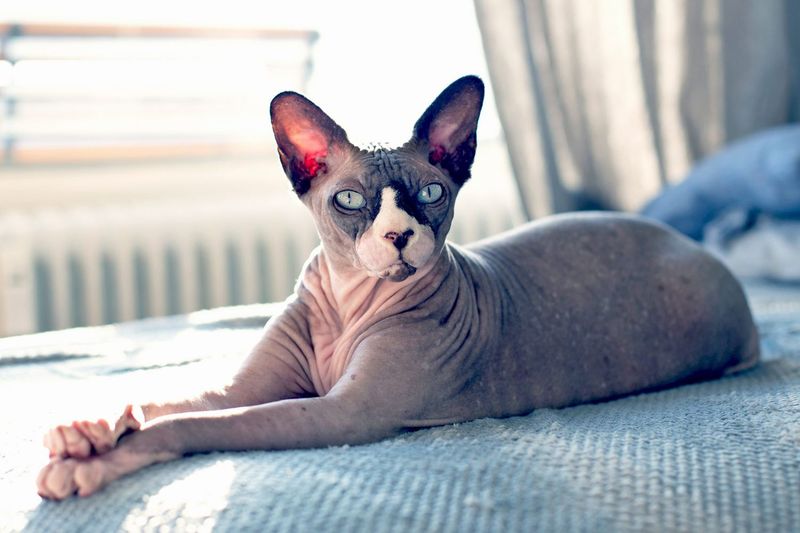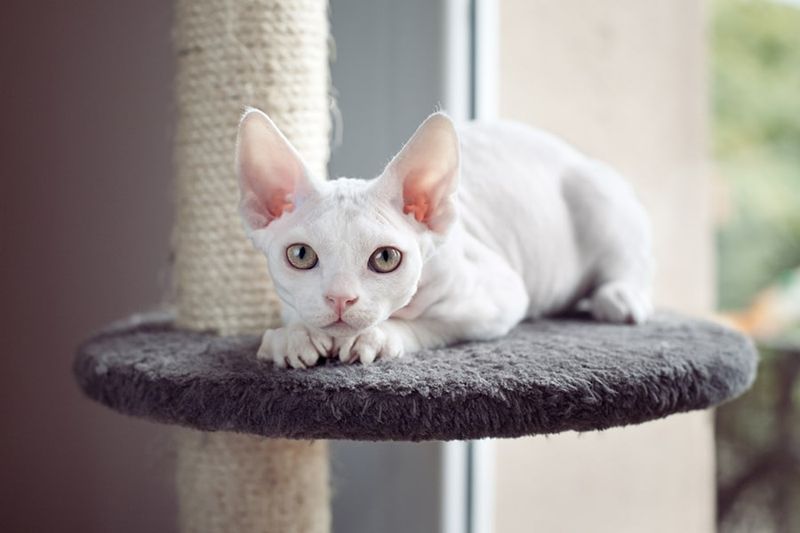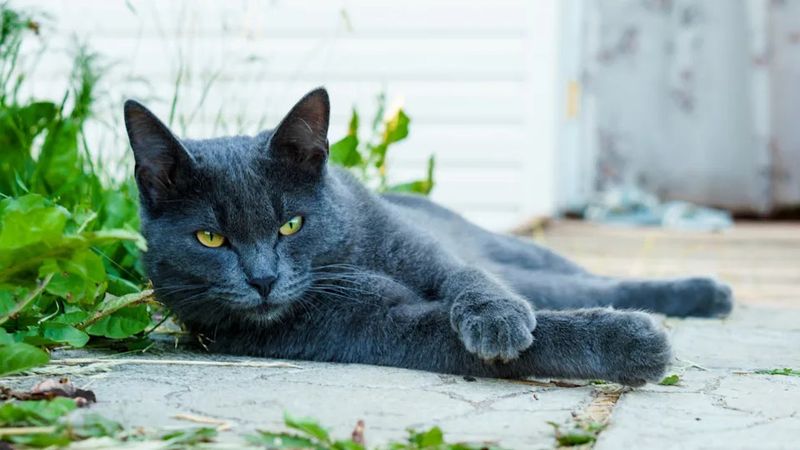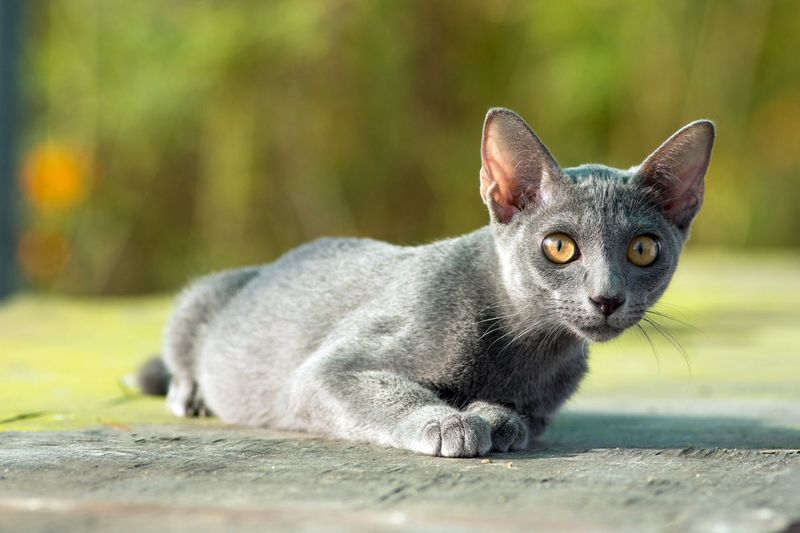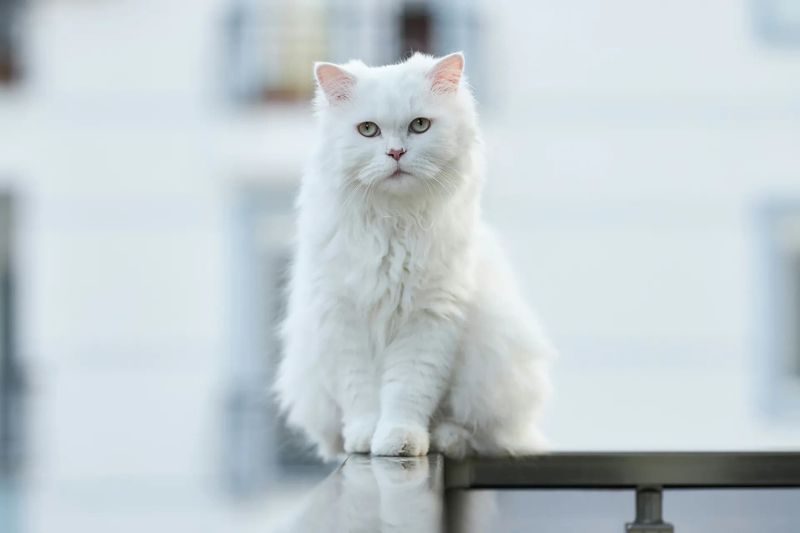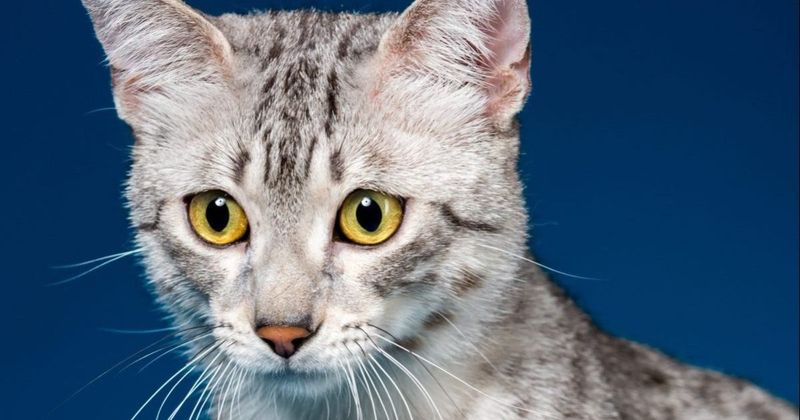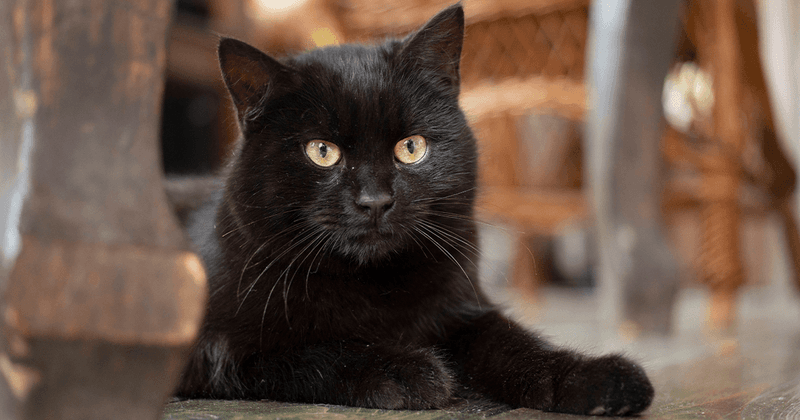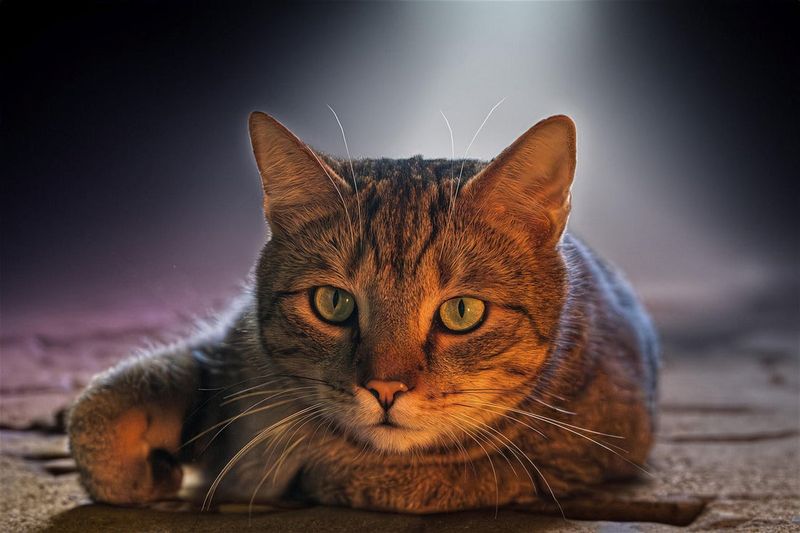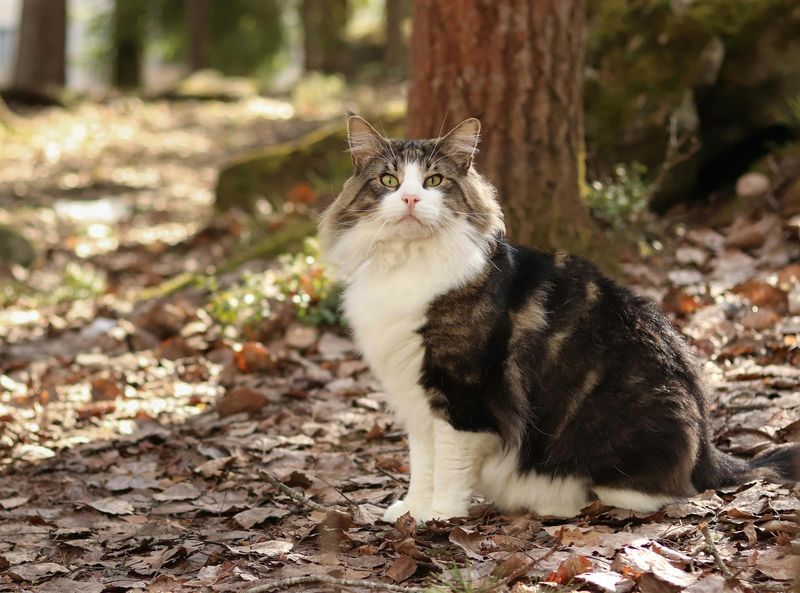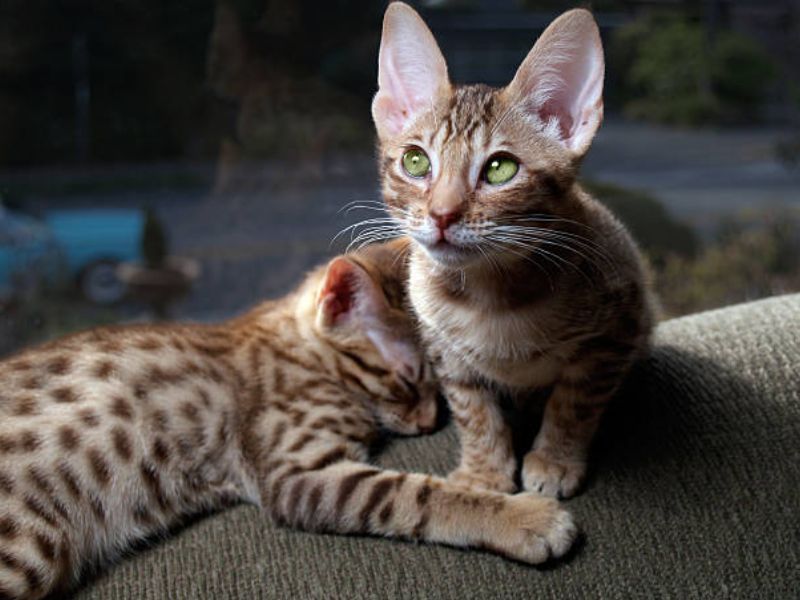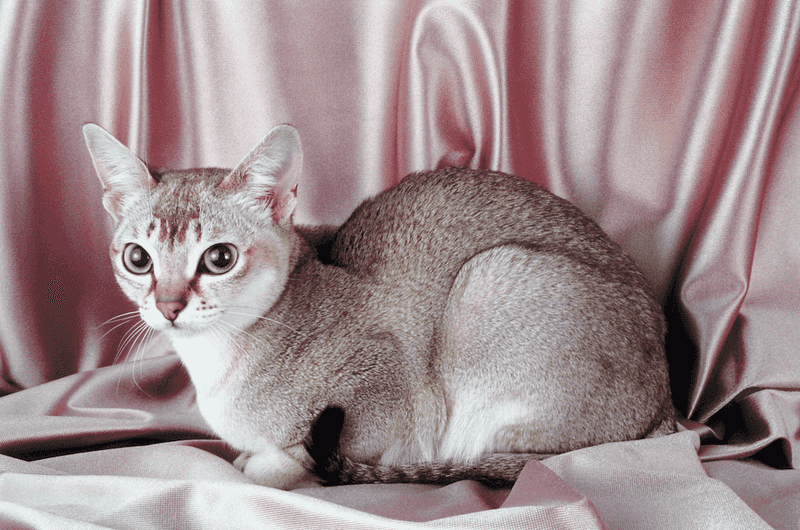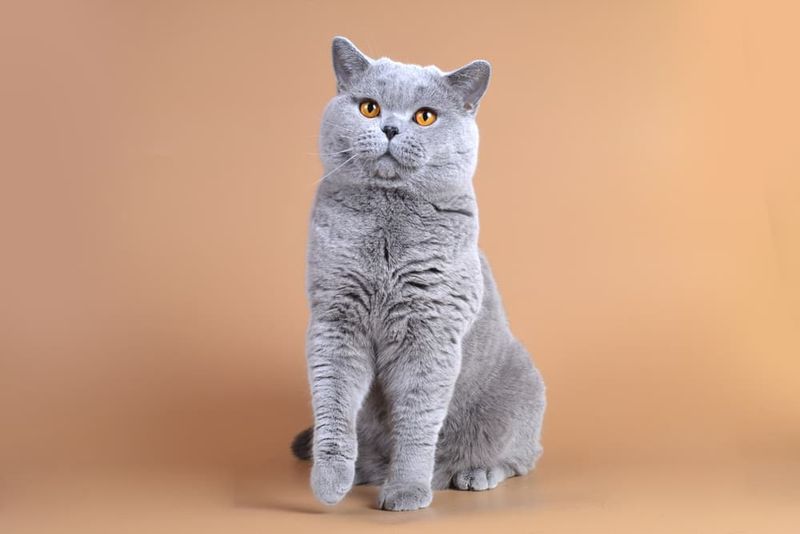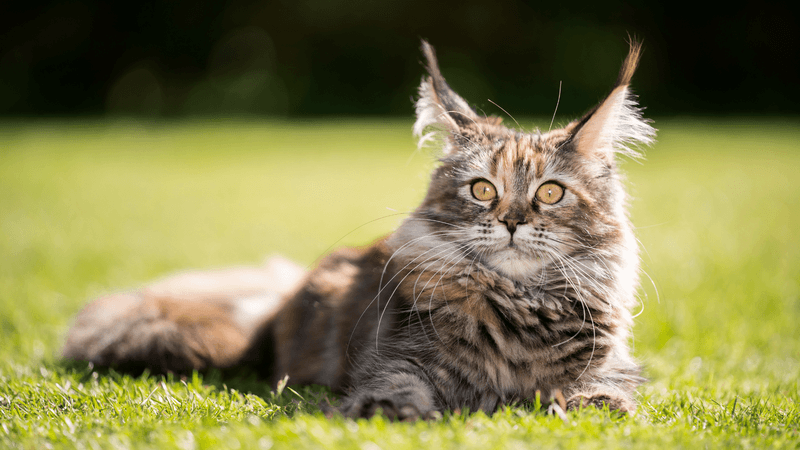📖 Table of Content:
- 1. Abyssinian
- 2. Siamese
- 3. Bengal
- 4. Scottish Fold
- 5. Burmese
- 6. Cornish Rex
- 7. Balinese
- 8. Savannah
- 9. Japanese Bobtail
- 10. Sphynx
- 11. Tonkinese
- 12. Devon Rex
- 13. Russian Blue
- 14. Korat
- 15. Turkish Angora
- 16. Egyptian Mau
- 17. Bombay
- 18. Somali
- 19. Norwegian Forest Cat
- 20. Ocicat
- 21. Singapura
- 22. British Shorthair
- 23. Maine Coon
Cats have long been admired for their independence and problem-solving abilities, but some breeds stand out for their exceptional intelligence. Scientists measure feline IQ through tests that evaluate memory, trainability, adaptability, and social intelligence. Understanding which cat breeds rank highest in brainpower can help potential pet owners choose companions that match their lifestyle and expectations. Here’s a look at the smartest cat breeds according to scientific research.
1. Abyssinian
Abyssinians possess an insatiable curiosity that drives their exceptional problem-solving abilities. Their active minds constantly seek stimulation, making them masters at figuring out puzzles, opening doors, and even turning on faucets.
Scientists note their remarkable spatial awareness and memory retention, allowing them to remember solutions to challenges weeks after first encountering them. These tawny-colored felines rarely sit still, preferring to explore and investigate their surroundings.
Research shows Abyssinians can learn commands as quickly as many dog breeds, responding to both verbal cues and hand signals with impressive consistency.
2. Siamese
Renowned for their striking blue eyes and distinctive color points, Siamese cats couple beauty with remarkable brainpower. Their legendary vocal abilities aren’t just noise—they’ve developed specific sounds to communicate different needs and emotions to their human companions.
Research at the University of Tokyo found Siamese cats excel at observational learning, watching and mimicking human behaviors more effectively than most breeds. They form complex social hierarchies and remember faces for years.
Siamese cats demonstrate exceptional pattern recognition, quickly learning household routines and anticipating events before they happen.
3. Bengal
Bengals combine wild-looking spotted coats with calculated intelligence that manifests in strategic hunting behaviors. Studies from Cornell University’s Feline Behavior Center show Bengals excel at multi-step problem solving, remembering solutions to complex puzzles months later.
Their exceptional dexterity allows them to manipulate objects with almost human-like precision. Bengals have been observed turning doorknobs, operating simple latches, and even learning to flush toilets out of curiosity.
Researchers note their remarkable ability to learn through observation, often watching their owners perform tasks repeatedly before attempting them themselves.
4. Scottish Fold
Behind those adorable folded ears lies one of the most analytical feline minds. Scottish Folds approach problems methodically, often sitting back to observe before taking action—a rare trait in the typically impulsive cat world.
Research published in the Journal of Feline Medicine shows Scottish Folds excel at pattern recognition tests, outperforming many breeds in experiments involving predictive sequences. Their calm demeanor masks an active mind constantly processing information.
Neurological studies reveal Scottish Folds have unusually high activity in brain regions associated with planning and foresight, explaining their reputation for chess-like strategic thinking.
5. Burmese
A study by the University of California’s Animal Behavior Center revealed that Burmese cats demonstrate emotional intelligence comparable to their cognitive strengths. They effectively interpret human facial expressions and body language, responding to nuanced emotional signals.
Their glossy coats hide brains wired for social complexity. Burmese form deep bonds with multiple family members, adjusting their behavior to match each person’s personality and preferences.
Particularly impressive is their capacity for collaborative problem-solving—studies show Burmese cats will work together to achieve goals, demonstrating advanced social coordination rarely seen outside primates.
6. Cornish Rex
The Cornish Rex’s distinctive wavy coat covers a brain that processes information at remarkable speeds. Neurological studies show these cats have unusually fast neural connections, allowing them to react and learn at rates that surpass most feline breeds.
Their agile minds match their athletic bodies. Cornish Rex cats excel at tasks requiring quick adaptation and rapid learning. Research from Bristol University’s Animal Behavior Program demonstrated their ability to solve new puzzles with minimal trial-and-error.
Most impressive is their working memory capacity—they can remember the location of up to seven hidden objects simultaneously, a cognitive feat comparable to that of great apes.
7. Balinese
Often described as the “long-haired Siamese,” Balinese cats inherit more than just the striking color points from their short-haired cousins. Cognitive research shows Balinese possess extraordinary intuitive intelligence, often anticipating their owners’ needs before being asked.
Their silky coats hide neural pathways specialized for social cognition. Studies from Tokyo’s Animal Mind Institute found Balinese cats excel at understanding human pointing gestures—a rare ability even among primates.
Particularly notable is their capacity for inference—Balinese can solve problems by deducing solutions rather than through trial and error, demonstrating abstract thinking typically reserved for higher primates.
8. Savannah
Don’t let the spots fool you—Savannah cats are as smart as they are striking. With brains borrowed from their wild serval relatives, they excel at navigating space and cracking complex challenges, often in ways that surprise even seasoned cat owners.
Research from the Feline Cognition Project shows Savannahs excel at causal reasoning—understanding that certain actions produce specific results. They quickly grasp the mechanics of complex puzzle toys, often solving them in record time.
Particularly impressive is their ability to create mental maps of their territory, remembering precise locations of resources and potential threats even after single exposures—a survival trait inherited from their wild ancestors.
9. Japanese Bobtail
Japanese Bobtails combine their distinctive stubby tails with remarkable cognitive flexibility. Studies from Kyoto University’s Animal Cognition Lab show these cats excel at finding novel solutions to problems, often approaching challenges from unexpected angles.
Their adaptable intelligence helped them survive for centuries in Japanese villages, where they were valued for protecting grain stores from rodents. Research demonstrates their exceptional memory for locations, remembering up to 16 different hiding spots after just one observation.
Japanese Bobtails show particular talent for tool use—they’ve been documented using objects as levers and even fashioning simple tools from available materials, a cognitive achievement once thought unique to primates.
10. Sphynx
Don’t let their hairless appearance fool you—Sphynx cats possess extraordinary sensory intelligence. Their lack of fur enhances tactile sensitivity, contributing to advanced environmental awareness and problem-solving approaches that leverage their unique sensory advantages.
Research from the University of Pennsylvania’s Animal Cognition Center shows Sphynx cats excel at tests requiring fine sensory discrimination. They can detect temperature differences as small as 2 degrees and identify objects by texture alone.
Neurological studies reveal larger-than-average brain regions dedicated to sensory processing, allowing these cats to gather and integrate information in ways other breeds cannot—essentially experiencing a richer, more detailed world.
11. Tonkinese
Tonkinese cats inherit the best cognitive traits from both Siamese and Burmese ancestors, creating a uniquely balanced intelligence. Studies show they combine the Siamese’s problem-solving abilities with the Burmese’s emotional intelligence for a comprehensive cognitive profile.
Research from Cornell’s Feline Behavior Center demonstrates Tonkinese excel at both solo and social learning tasks. They learn from watching both humans and other cats, then adapt these observations to new situations.
Their aqua-blue eyes hide remarkable memory capabilities—Tonkinese can remember solutions to puzzles for over six months without reinforcement, outperforming many breeds in long-term retention tests.
12. Devon Rex
With their impish looks and oversized ears, Devon Rex cats are natural-born explorers. Their playful intelligence shines through in how they learn—by experimenting, investigating, and solving problems in clever, unexpected ways.
Research from Edinburgh University’s Animal Cognition Department shows Devon Rex cats excel at insight learning—suddenly grasping solutions after periods of experimentation. They demonstrate remarkable cognitive flexibility, quickly adapting strategies when initial approaches fail.
Devon Rex cats show particular talent for sequential learning, mastering multi-step processes more quickly than most breeds and remembering complex sequences even after long periods without practice.
13. Russian Blue
Moscow State University research confirms that Russian Blues exhibit advanced analytical thinking. Known for their calm temperament and intelligence, they excel in tasks involving pattern detection and rule-based reasoning.
Their emerald-green eyes hide brains wired for mathematical thinking. Studies demonstrate Russian Blues can distinguish between different quantities and even show rudimentary understanding of addition and subtraction through their behavior.
Particularly impressive is their patience—Russian Blues will work methodically on problems for extended periods, showing unusual persistence compared to more impulsive breeds.
14. Korat
Korats pair their distinctive blue-gray coats and heart-shaped faces with predictive intelligence rarely seen in domestic animals. Research from Thailand’s Veterinary Cognitive Science Program shows these cats excel at anticipatory thinking, often preparing for events before they occur.
Their large green eyes observe patterns others miss. Studies demonstrate Korats can predict their owners’ routines with remarkable accuracy, often waiting at doors or windows minutes before someone’s scheduled arrival.
Korats show particular talent for weather prediction—research documents their consistent behavior changes hours before storms arrive, suggesting sensitivity to barometric pressure changes and an ability to connect these sensory inputs with future events.
15. Turkish Angora
Beneath their elegant white coats, Turkish Angoras possess remarkably strategic minds. Research from Istanbul University’s Animal Cognition Department shows they can plan several steps ahead—a sophisticated cognitive skill once thought exclusive to primates and birds like crows.
Their sapphire-blue eyes (or heterochromatic in some cases) mask brains specialized for sequential thinking. Studies demonstrate Turkish Angoras can solve maze puzzles by mentally mapping the entire route before beginning, rather than through trial and error.
Particularly impressive is their ability to delay gratification—research shows Turkish Angoras will forgo immediate rewards for larger future benefits, demonstrating advanced impulse control and future planning.
16. Egyptian Mau
Egyptian Maus combine their spotted coats and athletic prowess with computational intelligence that processes information at remarkable speeds. Research from Cairo University’s Veterinary Cognitive Science Department shows these cats possess neural pathways optimized for rapid decision-making.
Their distinctive spotted patterns mirror minds capable of split-second calculations. Studies demonstrate Egyptian Maus can make complex spatial judgments in milliseconds, allowing them to navigate challenging environments at full speed without collision.
Particularly impressive is their predictive movement tracking—research shows Egyptian Maus can anticipate the future position of moving objects with mathematical precision, explaining their extraordinary success as hunters.
17. Bombay
Sleek in looks and sharp in mind, Bombay cats thrive on adaptability. Purdue University research shows they excel at adjusting to change—making them quick thinkers in shifting situations.
Their copper eyes hide brains specialized for learning by inference. Studies demonstrate Bombays can solve new problems by applying knowledge gained from different contexts, showing impressive cognitive transfer abilities.
Bombays display remarkable selective attention—research shows they can focus intently on relevant information while filtering out distractions, allowing them to master complex tasks in environments where other breeds become overwhelmed.
18. Somali
Research from the University of Helsinki’s Animal Cognition Lab confirms that Somali cats exhibit strong divergent thinking, often solving tasks with flexible, creative strategies that indicate advanced cognitive processing.
Their bushy tails and ticked coats hide brains wired for cognitive flexibility. Studies demonstrate Somalis regularly develop novel approaches to challenges, often discovering solutions that researchers hadn’t anticipated.
Particularly impressive is their analogical reasoning—research shows Somalis can apply solutions from one context to entirely different problems, demonstrating an abstract understanding of underlying principles rather than mere memorization of specific scenarios.
19. Norwegian Forest Cat
Regal and rugged, Norwegian Forest Cats are more than just beautiful—they’re built for survival. Research from Oslo University reveals their sharp navigational skills and uncanny ability to sense weather shifts, echoing the instincts of their wild ancestors.
Their thick, water-resistant coats protect brains specialized for spatial mapping. Studies demonstrate Norwegian Forest Cats can remember and navigate complex three-dimensional territories spanning several miles, rarely becoming disoriented even in unfamiliar settings.
Particularly impressive is their predictive weather intelligence—research documents their ability to alter behavior patterns 12-24 hours before major weather shifts, suggesting sophisticated interpretation of environmental cues.
20. Ocicat
They may look like mini leopards, but Ocicats are puzzle-solvers at heart. According to Michigan State University research, these clever felines are masters at spotting patterns and cracking the code of their environment.
Their distinctive spotted coats mirror minds capable of detecting subtle patterns. Studies demonstrate Ocicats can learn complex sequential patterns after minimal exposure, then apply this knowledge to predict future events.
Particularly impressive is their statistical learning ability—research shows Ocicats can intuitively grasp probability distributions, gravitating toward choices with higher success rates even when patterns are partially randomized.
21. Singapura
Delicate in size but mighty in mind, Singapuras defy expectations. Studies from Singapore’s National University show that their dense neural architecture gives them sharp cognitive abilities, proving that brilliance often comes in the smallest forms.
Their diminutive size and distinctive ticked coats hide minds specialized for efficiency. Studies demonstrate Singapuras excel at solving problems with minimal energy expenditure, often finding the most elegant solution rather than brute-forcing challenges.
Particularly impressive is their information processing speed—research shows Singapuras can learn new commands in as few as three repetitions, demonstrating exceptional neural efficiency and rapid synaptic formation.
22. British Shorthair
British Shorthairs combine their plush coats and round faces with practical intelligence focused on efficiency and reliability. Research from Cambridge University’s Veterinary Science Department shows these cats excel at consistent problem-solving using proven methods rather than experimentation.
Their stocky builds and dense fur hide minds specialized for procedural memory. Studies demonstrate British Shorthairs can master complex routines and remember them with remarkable precision for years without reinforcement.
Particularly impressive is their situational judgment—research shows British Shorthairs excel at assessing risk versus reward, consistently making pragmatic choices that maximize benefits while minimizing effort or potential hazards.
23. Maine Coon
Big, fluffy, and socially smart, Maine Coons are the peacekeepers of your pet family. University of Maine research shows they’re pros at understanding and smoothing out the social drama in multi-pet households.
Their tufted ears and bushy tails frame brains specialized for cooperative problem-solving. Studies demonstrate Maine Coons can work collaboratively with both humans and other animals, showing unusual willingness to coordinate actions for mutual benefit.
Particularly impressive is their emotional intelligence—research shows Maine Coons can distinguish between different human emotional states and adjust their behavior accordingly, offering comfort during distress and respecting boundaries during concentration.
